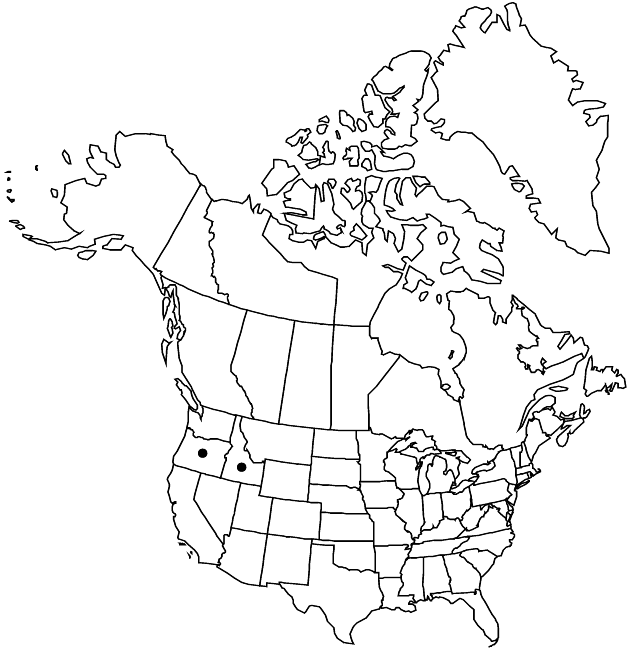Chaenactis cusickii
in A. Gray et al., Syn. Fl. N. Amer. ed. 2. 1(2): 452. 1886.
Plants 3.5–10(–15) cm; proximal indument grayish, sparsely arachnoid, glabrescent. Stems mostly 1–5; branches mainly proximal. Leaves basal (withering) and cauline (not notably smaller or sparser distally), 1–4 cm; largest blades ± oblanceolate, plane, ± succulent, not lobed (margins entire or distally ± crenate). Heads mostly 1–5(–12) per stem. Peduncles 0.5–2.5 cm, glabrescent distally (sparsely arachnoid early; bracts 1–2, leaflike, surpassing heads). Involucres ± hemispheric to campanulate. Phyllaries: longest 6–9(–10) mm (surpassed by florets); outer (uniformly) sparsely arachnoid to glabrescent in fruit, not stipitate-glandular (inner apically brownish-villosulous), apices usually erect, blunt, ± rigid. Florets: corollas (diurnal) white to pinkish, 3–7 mm (± equaling cypselae; anthers exserted); peripheral corollas ± erect, actinomorphic, scarcely enlarged. Cypselae 4–6 mm; pappi of (8–)10–14 scales in 2–3 gradually unequal series, longest scales 1.5–3.5 mm. 2n = 12.
Phenology: Flowering late Apr–Jun.
Habitat: Light-colored shrink-swell clay soils from volcanic ash and tuff, semiarid shrublands
Elevation: 700–1300(–1800) m
Discussion
Of conservation concern.
Chaenactis cusickii is known from Malheur County, Oregon, and adjacent Owyhee and Canyon counties, Idaho. Its relationship to other species is obscure.
